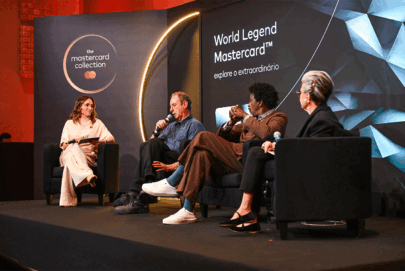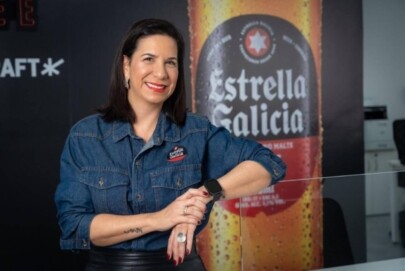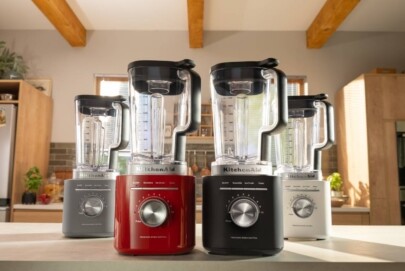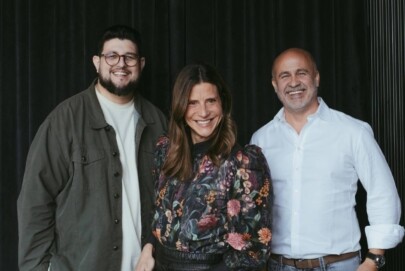Advertising vet Jenny Gadd has steered production departments at agencies such as Ogilvy & Mather, Johannes Leonardo and Fallon Minneapolis, and served as executive producer at digital and production shops North Kingdom, Thomas Thomas Films, Believe Media and others. So she was prepared for her latest role: global head of production—at Airbnb.
“A lot of people right now are intrigued by being closer to the core business and being much more effective,” says Gadd, who joined Airbnb last fall. “We’re tasked with content that’s fast and cheap, but good.”
In recent years, the industry has seen numerous top agency creative and production talents cross over to what was once considered the “dark side”—the place where creative careers went to die. Tor Myhren has gone from Grey to Apple, Andrew McKechnie from various shops to Verizon, and Todd Waterbury from Wieden & Kennedy to Target, to name just a few of the top-tier agency talents who have made the leap.
And the quality of work produced suggests that such a move could actually lead to a rebirth. Airbnb’s Super Bowl ad came from inside; Dollar Shave Club has had a stream of clutter-busting ideas; Wonderful Pistachios had a laugh-out-loud ad with a voracious Venus de Milo that could have come from the best comedy-driven agencies; and Spotify, among other great work, turned a New York subway station into a temple of David Bowie.

“There’s an incredible appetite for experimentation and bravery [here],” says Jackie Jantos, VP of brand creative at Spotify, who went from Ogilvy to Coke to her current gig. “[Also], sitting at the intersection of technology and music really puts you in a place where you’re focusing and thinking about culture.”
Know thyself and thy new home
“The reason I passed on other [in-house] offers was because I just didn’t want to be married to that brand 24/7,” says Airbnb’s Gadd. “With Airbnb, I was a big fan. … Also, I found my personal values are aligned with their core values—it felt like a highly creative, community-driven company.”
You may not be coddled
In fact, you might feel alone. Alec Brownstein, who had worked at a number of agencies before landing in-house at Dollar Shave Club, where he’s executive creative director, says when he first arrived, it was culture shock: “Agencies are structured to coddle creatives—the precious creative, creative is king. That’s the right way to be when you’re in a creative ad agency, but when you’re one of few creative guys at a brand, people don’t share that sentiment.” At agencies, for example, you might have an account exec to help sell creative ideas with decent budgets; if you’re client-side, you may have to do that selling yourself.
There’s work. Lots of work
Anastacia Maggioncalda became the head of production at LinkedIn’s creative studio last fall, after serving in top production roles at Pereira & O’Dell and Eleven, and at production companies. “Agency-side, you spend a lot of time in concepting,” shesays. “In-house, you’re creating so much content, and outputting on a daily basis.”
Says DSC’s Brownstein, “One of our sales pitches is, ‘You’ll get to make more work,’ which is oddly counterintuitive. [But] creatives get frustrated when they don’t get to make stuff. … You make a lot more stuff [client-side] by virtue of the changing digital landscape and you have to feed the social media beast. You make stuff that doesn’t live forever, so you’re not as precious about things.”
You will move fast
LinkedIn’s Maggioncalda says one recent project involved creating a book for an event. “It was a last-minute ask, so we pulled together a design team, created a 40-page book in about five days. If we were to put out a scope of work for out-of-house for vendor partners and printers, that would have been a four-month project. It helped that our internal business partners sit five feet away. Having the ability to get everyone around the table quickly and do that on a daily, hourly basis is a huge benefit.”
You could end up wearing a lot of hats
” ‘Diverse’ is the perfect description of a day at Airbnb,” says Gadd. “Not only are the content and assignments very diverse, my team is too.” Her producers’ backgrounds span no less than film, television, journalism, documentaries, design and events. “On certain projects, we act as the agency and hire outside production people; on other projects, we have resources to do all the way through delivery; and sometimes, I’m the client when I’m working with our agency Wieden & Kennedy.”
Prepare to go deep
“When you move in-house, something that seems like a small project is connected to so many other aspects of the business in so many interesting ways,” says LinkedIn Executive Creative Director Kevin Frank, who worked at agencies including Venables Bell and FCB. (Prior to LinkedIn, Frank was at Apple.) Take a web banner, he says: “You’re also thinking what would communications and PR say, what would legal say. You’re at an agency, it’s your job to express the brand your client has created. But when you work in-house, not only do you get to do that, you get to shape the brand.”
Which means, in turn, that creative can influence work further upstream. “I can affect everything from outbound messaging to experience, to the product in hand,” says Brownstein. “I’m involved in everything from what does the product smell like to what is the name to what to put on the label.”
At Airbnb, Gadd’s team touches product as well. The company recently announced Airbnb Plus and Beyond, its luxury offerings, and Gadd says that “was the biggest product launch in Airbnb history, and our team was intimately involved in not only creating all the content—for marketing and PR initiatives—but also very involved in developing those products.”
The rewards can be different
“There’s a paradigm shift,” says Brownstein. “When you’re in an ad agency, you’re interested in building a portfolio and maybe making the kookiest, strangest ads so you can win awards, command more money, then rinse and repeat.” But being inside a company, a startup in particular, he says, opens your eyes to different kinds of rewards and successes.
“When I started at DSC, I was doing a lot of unsexy things—writing Google ad copy, email copy. At an agency, you think, go find some junior to do that. … But when you recognize the direct connection to the bottom line, you’re willing to do everything.” One telling example was a seemingly throwaway idea—to add an extra button on the company’s website that said, “Buy another one.” That turned out, he says, to be a winner of an idea.
“It was really successful and things like that get you excited about all the different ways you can impact a business outside of advertising,” says Brownstein. “I love creative, funny, kooky stuff, but it’s got to work.”
You may not always ‘sign’ what you do
While agencies usually are happy to give credit to the various creatives, producers and partners on their work, some companies, like Apple notoriously, don’t credit publically the individuals involved in campaign creation. So depending on where you are, get comfortable with not seeing your name in lights.
Beware: In-house jobs are getting competitive
“When I first went client-side, the reaction from everyone was, ‘Way to kill your career!’ ” Brownstein says. “Now the reaction is, ‘How can I go in-house?’ ”
Maggioncalda agrees, saying, “One of the most exciting things is in talent acquisition—the number of people excited to come here and wanting to collaborate with me and my team on a daily basis.” She says she sees anywhere from five to 15 people reach out daily about informational meet-ups. She recently had an open position for a senior integrated producer and says that the company got over 160 applications.
On hiring
Brownstein says when he’s looking to bring people in, it’s not just about a standout portfolio.
“Equally important is the right mindset,” he says. “If you’re of the mindset, ‘I want to create scam posters and drink champagne,’ this is not the fit. There’s a place in the industry for ad purists, but when you come in-house, you have to be just as excited about a cool commercial as you are about button placement—’OMG, it doubled revenue!’ If you can open your eyes to the ultimate goal, you’ll do well, but if you can’t, you’ll struggle.”













